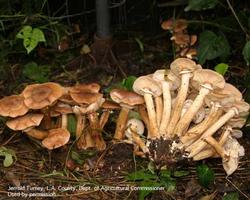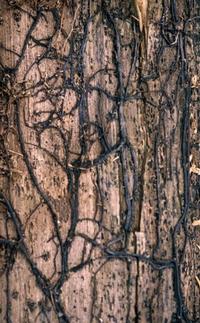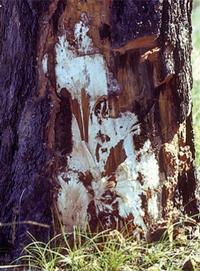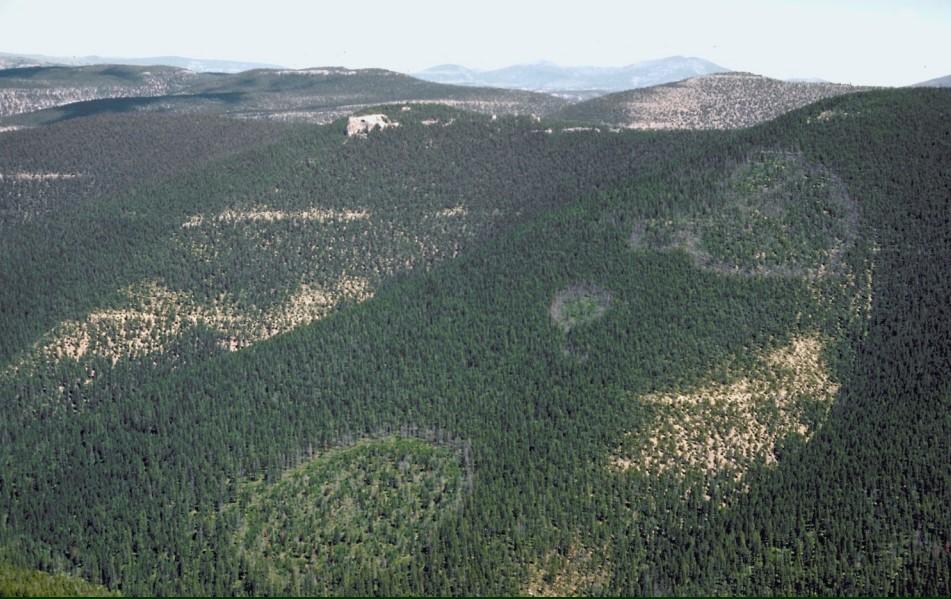Armillaria Root Disease (Armillaria spp)
Trees Affected
Common: Many conifers, but especially Douglas-fir and true firs (A. gallica and others) and hardwoods (A. mellea complex)
Summary
Armillaria root disease is caused by fungi in the genus Armillaria, and has varying effects depending on both host and pathogen species. However, Armillaria species that cause significant root disease on conifers tend to be associated with symptoms such as crown thinning, top-down dieoff, distress crops, and resin bleeds on the lower trunk. On a slightly larger scale, Armillaria infected stands often include canopy gaps caused by the slow decline and falling of host trees. Affected trees often snap at or near the base due to extensive root and lower trunk decay. Although these changes in stand structure are characteristic of many root diseases, Armillaria disease centers can be identified by the presence of tough, dark plates interspersed throughout stringy, yellowish to white rotted wood at the base of downed host trees.
Additionally, this fungus produces a range of other identifiable organs, including black, shoestring-like structures called rhizomorphs, flat, white fans of fungal tissue on the wood just below the bark, and clusters of golden tan mushrooms near the base of host trees. Armillaria spreads from tree to tree through soil and root systems within a stand, but is also capable of more long distance spread via spores from its fruiting bodies. Although Armillaria root disease can be problematic for public safety and some forest product industries, it also can play an important role in creating a variety of habitats and stand conditions throughout a larger landscape, which can be useful for some conservation and restoration efforts.
Local Distribution
Widespread.
Management Strategies
Complete elimination of Armillaria within stand is unlikely. However, stump removal can help reduce the amount of inoculum in the soil, and avoiding stressful conditions can reduce Armillaria-related mortality. Additionally, although the various species of Armillaria are capable of infecting many species of woody plants, some are more susceptible than others. In areas with extensive Armillaria presence, thinning out less resistant species such as Douglas-fir and true firs may increase survival of remaining trees.
Pests and Pathogens with Similar Symptoms
Black stain root disease (Leptographium wagenerii): This fungus also causes top-down decline in Douglas-fir, pines, and hemlocks, but can be distinguished from Armillaria root rot by the black staining of sound wood and by the lack of black shoestring/root-like cords (rhizomorphs) or white mycelial fans underneath the bark. However, it is possible for these pathogens to co-occur at a site, so the presence of one does not rule out the possibility of the other.
Further Reading
Descriptions of Armillaria species present in California:
https://www.caforestpestcouncil.org/root-diseases
Managing Armillaria in urban and residential areas:




